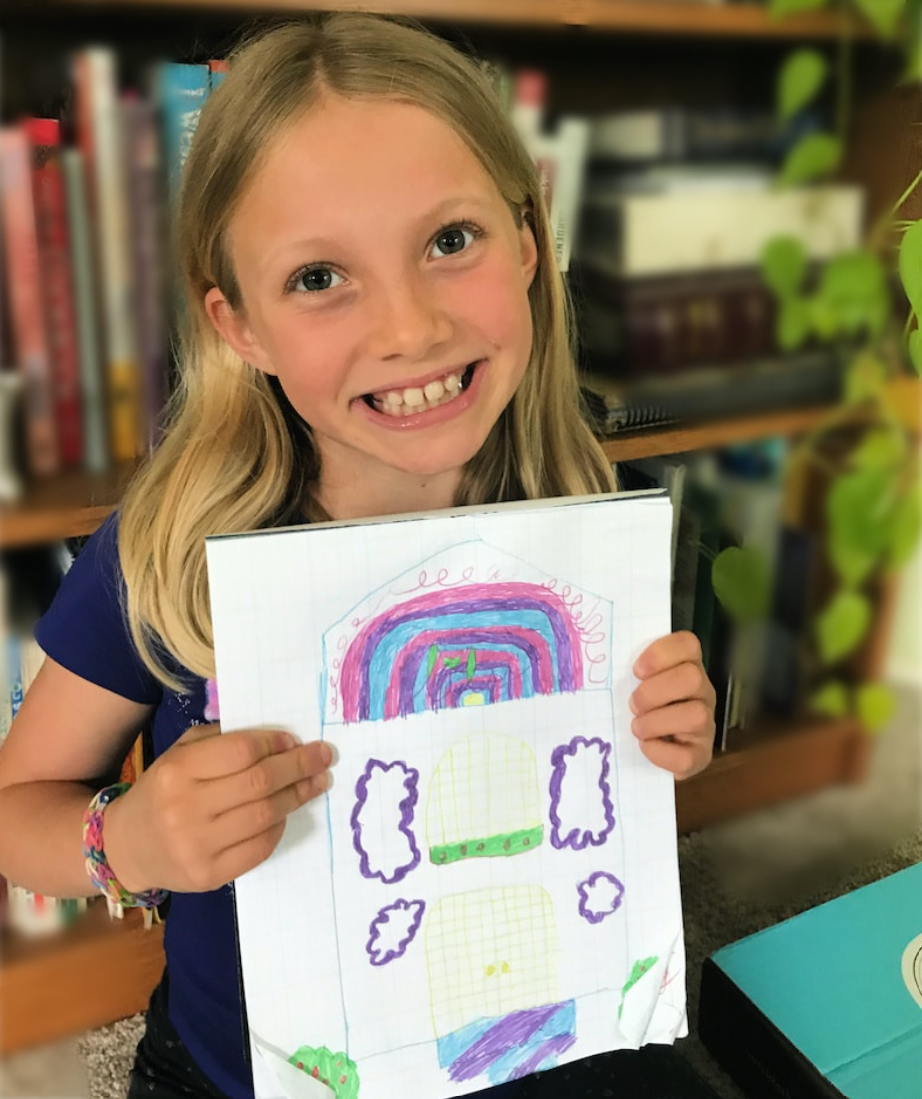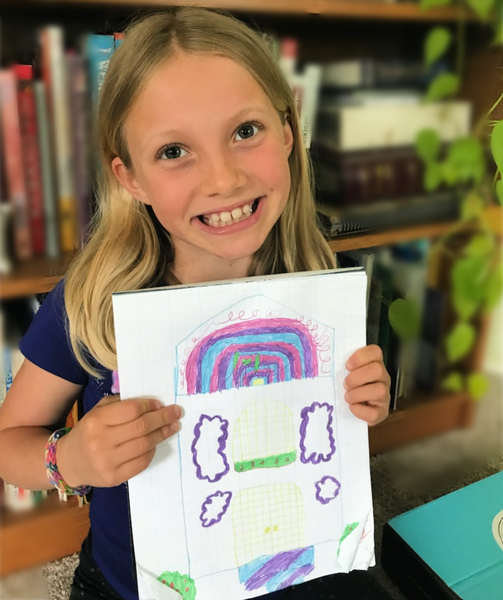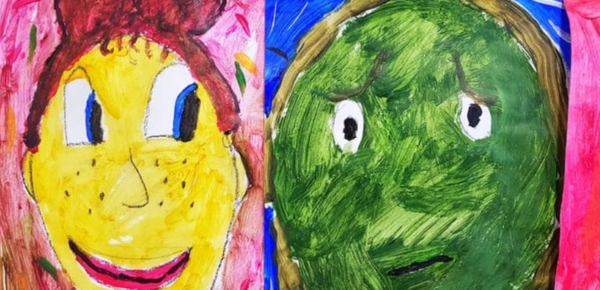How to Talk to Kids About Their Art


When your child shows you a picture she has just drawn and you can’t tell what the heck it is supposed to be, this might be your first reaction…
“Thanks. What is it?"
Although that may be the question that is top of mind for you at that moment, there is good reason to pause first, think, and respond with care. You’re ready to reframe how you talk to kids about art. But where do you start?
Start With Active Listening
The obvious reason for not asking that question is that you may hurt her feelings. It’s true, you might not be able to tell what it is! However, kids usually just assume that grown-ups will be able to tell what they are drawing. After all, your kid spent time, energy, and thought into this new creation.They know what it is, so they assume you do too.
Beyond that though, a question like “What is it?” prompts a child to give you a short, black-and-white answer, like “It’s a tree.” But if you ask her something like: “Tell me about your drawing,” you open the door for her to go much more in depth. “It is a big park, with a lot of green grass and a tree where kids like to play because…” You will learn so much more.
On a basic level, this will help her communicate what she was thinking when she made the drawing. Art is such a great way for children to communicate their thoughts and feelings. If we shove them into a box by making it have to look like something in particular, we are inadvertently limiting the child’s ability to use art meaningfully.
Remember, your positive response to your child’s artwork can help shape how they view their own art and themselves. Talking to kids about art is more than just a conversation starter – it’s an opportunity to connect.
Ask specific questions
Giving your child the opportunity to express the meaning behind her art also helps her develop verbal communication skills and will increase the detail that she puts into her subsequent artwork. This can be a great way to connect with your child and learn about the inner workings of her mind, what she dreams about, what her fears are, and more. Asking questions gives you the opportunity to learn more about your child and offers a moment of connection.

Another good question to ask is, “What is your favorite part of this drawing and why?” This question encourages her to go more in depth about the piece and her thought process behind it. Although she probably isn’t consciously aware that her brain went through a planning process, she made decisions about what to put in the drawing (subject matter), where to put everything (composition), and how big to make the different elements of the drawing (scale and proportion) when she planned it. Some more questions about the process of creating art itself are:
- Can you tell me about this drawing?
- What materials did you use to create this?
- What title would you like to give this piece of art?
- Why did you include this part?
- Did you like creating this? What did you like about it?
- Is there anything you would change about this drawing?
Let Your Child Lead the Conversation
Encourage her to tell you about the meaning behind her artwork by asking follow-up questions about her decisions. A lot of times, kids will make grown-ups way bigger than themselves when they draw their families or their teachers. Size can just be about who actually is bigger. However, sometimes size can indicate importance or power. You can gain insight into her thoughts and feelings by continuing the conversation.
- Why did you choose to use this color?
- It is interesting that you made your teacher much taller than your principal. Can you tell me about that?
- I see that the people in this drawing have different emotions. What are they feeling?
- How were you feeling when you made this?
Observe and Respond With What You Like
Resist the temptation to call her drawing pretty and rave about it. Focus instead on things like “I love how hard you worked on this,” or “I enjoy how you used these two colors together.” When children see that specific kinds of artwork are praised, they will try to duplicate them to get the praise instead of doing art to express themselves. Here are some other great phrases to use:
- I love how hard you worked on this project.
- I can see you put a lot of effort and thought into this artwork.
- I like these colors and patterns.
- You show amazing attention to detail.
- Even when you were frustrated, you didn’t give up!
- I’ve never thought of _______(her subject matter) that way!
- I love seeing your creativity come out.
- You have great ideas.
Display It Proudly
Showcasing your child’s artwork tells them that their effort, thoughts, and feelings are important and worthy of recognition. Ask your child what she would like to do with the piece of art. She might like to give it as a gift to a family member or show it to a friend. She might want to display it in your home. Some great places to hang your child’s art where it will be seen are:
- On your refrigerator
- On a window that gets full sunlight
- On her closet doors
- Framed on a wall with other art
- High on her bathroom mirror (to avoid splashing)
This is a good time to take a look at the work of professional artists. When you and your child observe art together, you can talk about what feelings and/or ideas the artist was trying to convey, beyond just how pretty the picture is. You’re communicating that your child’s creativity is valued and that art is something to be revered.
In fact, many of us adults need to do the same for ourselves. We are our own worst critics. Do you remember a time when you were a child and an adult asked you “What is it?” and you felt bad or embarrassed?
The next time your child hands you a drawing, you’ll be ready to respond with an inquisitive question and a keen observation.
To encourage your child’s creativity and to have more conversations like these, try one of our art projects for kids!